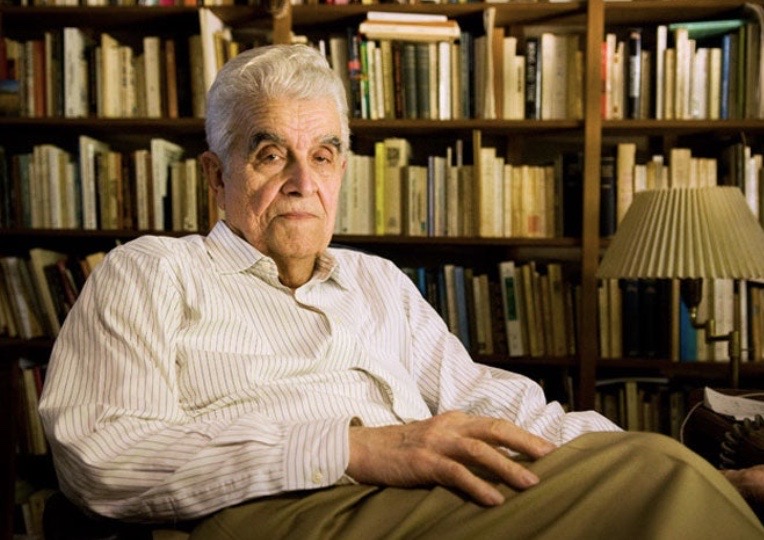The Joker and Cancel Culture (Transcript)
The opening scene of the Dark Knight movie by Christopher Nolan is one of the best examples of revolution and can help us understand contemporary phenomena like cancel culture.
In that scene, the Joker played by Heath Ledger orchestrates a bank heist which also becomes a statement for what the Joker stands for and establishes him as the King of an upside down clown hierarchy.
Transcript of Video
One of the most powerful moments in the movie The Dark Knight is the opening sequence. In this scene, we find the Joker orchestrating a clockwork-precision bank heist. However, as the robbery plays out, we discover there is something else altogether going on, and the bank heist also becomes a statement of what the Joker stands for. He stands for chaos, or more specifically, he represents an upside-down clown hierarchy. The bank robbery scene is one of the most succinct portrayals of revolution ever made. It can help us understand contemporary phenomena like cancel culture and other upside-down structures, which, like the serpent of chaos, always end up devouring themselves.
The scene follows a group of robbers in clown masks. The spoils are supposed to be distributed equitably among the group members, but each of the participants thinks he is in on a little secret. When the first robber finishes his job with the alarm, the one responsible for opening the vault kills him by shooting him in the back. Then, as the vault guy is doing what he is there for, he tells the next robber, whose job it is to fill up the money bags, that “The boss told me when the guy was done, take him out—one less share, right?” Of course, the money bag guy has been told a similar story, so once the vault is open, he takes out his collaborator.
At this point, the money bag guy thinks he has figured it out, so in order to stop the dominos from falling, he decides to take things into his own hands. He takes his gun out and points it at the next clown: “I bet the Joker told you to kill me as soon as we loaded the cash?” If he kills the next guy before the next guy kills him, he will be ok, right? But of course, once the gears of revolution have started turning, it is difficult to stop them. The bus driver runs him over, and to finish everything off, the Joker, who had been hiding behind a mask this whole time, kills the bus driver and remains alone on the pyramid of bodies. For the Joker, the purpose of the whole process is not to keep all the money for himself. The Joker does not care about that. He tells us why he did it when the bank manager asks him, “What do you believe in?” The Joker answers, “Whatever doesn’t kill you makes you stranger.” The purpose is to crystalize his position as king of the margin, emperor of the strange. We have just witnessed an upside-down hierarchy playing itself out.
In a normal hierarchy, there is an exchange between the top and the bottom. The higher aspects of the hierarchy gives organization, identity, a sense of unity and cohesion to what is below. They provide a plan. The lower rungs of the hierarchy provide potential, a body to the identity and specificity to general rules. They make it possible for a plan to be executed. Each level of the hierarchy receives unity from what is above in exchange for body and multiplicity, while also providing unity to what is below itself. This is of course true of human systems and governments alike. Nations provide unity to provinces or states, states provide unity to cities, cities provide unity to neighborhoods, continuing down to streets, houses, rooms, and even down to the quantum level. And all of these levels provide potential from below to embody the identity from above. A country or any other level of the hierarchy cannot exist in the world without all the lower levels of reality constituting them. This is the fractal structure of reality.
In the Dark Knight scene, we see how chaos appears as an upside-down hierarchy. It is not a normal business transaction where purposeful objects and services are exchanged for the potential that is money. Rather, we see a robbery where social rules and exchange break down. To emphasize the chaos as a turning wheel, it is important that all of this happens through a bunch of clowns. The pattern of the clown is in full force, because the entire robbery is set up as a deadly practical joke. As one clown finishes playing a trick on the other, he quickly realizes that the joke is on him. As the wheel turns and turns, only the king of the upside-down is left standing, made more powerful by having orchestrated this gauntlet.
The phrase “Like Saturn, the Revolution eats its children” was coined by a French Royalist named Jacques Mallet du Pan during the French Revolution and has remained a key phrase in understanding the side effects of revolutionary action. As the pattern goes, the Greek god Saturn castrated his Father, Ouranos, who is Heaven itself. It was the first act of revolution, and was done to free himself and his siblings from the tyrannical order of the Father. In doing this, Saturn acquired power for himself. But because the legitimacy of his own power came from his Heavenly lineage, by castrating Heaven he also destroyed his legitimacy, opening himself up to being questioned by his own progeny. The only way to stop this was to perpetuate a purge, preventing his own lineage from existing.
In The Dark Knight, we see how the first clown takes out the one that preceded him, and is then taken out by the next. By the third step, the clown with the money bags understands that the only way to stop this cascade of destruction is to turn around and take out the next in line before it happens to him. He does not succeed. But if he had succeeded, he of course would also have had to take out the bus driver. There is no other solution once the revolutionary wheel starts turning.
There are many examples of this in history, which is why revolutions always end up in purges. The first purges are of the different elite classes. Thus, the nobles use the bourgeoisie to take out the king, the bourgeoisie use the worker to take out the nobles, and so forth until the system is burned to the ground. The person who is able to stop it is the one capable of both destroying those from whom he takes power and also those next in line. For example, once Stalin secured his power, he destroyed all his contenders while also crushing those beneath him and getting the lower levels of the hierarchy to fight amongst themselves.
A more recent and milder example of this chaotic hierarchy is found in the “cancel culture” of Social Justice and intersectionality. Those who want to destroy the Patriarchy are immediately suspected of being tools of the Patriarchy who must in turn be destroyed. In order to prevent that, there has to be a purge one way or another, or else one risks being next in line for the social guillotine. And so in the world of Social Justice, we see two strategies being laid out, the same two strategies we see in the Joker scene. One strategy is the perpetuation of revolution itself, where more and more marginal or strange identities must compete to emancipate themselves. Western feminists accuse Western men, minority feminists accuse Western women, LGBT activists accuse feminists, trans activists accuse others in the LGBT coalition, and minority trans activists… well, you get the picture. The other solution is the one taken by the money bag clown, that is, trying to stop the bleeding by purging the other way. In this strategy, you find “TERF” feminists calling out trans activists for destroying what they have built, as well as certain trans activists resisting the inclusion of other stranger and more marginal identities. We saw numerous waves of this with Contrapoints, a trans activist on YouTube who was constantly being “cancelled” by other activists for not accepting some esoteric aspect of LGBTQ+ contention. Of course, just like the Joker scene, the entire process is related to a belief about how reality works. It is a competition to win the marginal kingship, to live out the reality of the revolutionary cycle, which is that “Whatever doesn’t kill you makes you stranger”.
Linked Articles & Posts
Linked Premium Articles & Posts
MEMBERSHIP
Join our Symbolic World community today and enjoy free access to community forums, premium content, and exclusive offers.



.svg)



.svg.png)






Comments